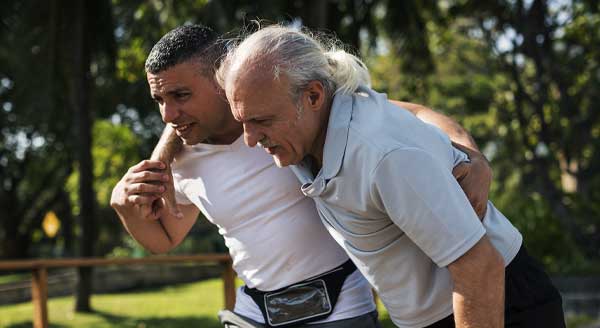This caregivers guide is aimed to help first time caregivers, it includes advice, resources and checklists
Caregiving is not easy but it’s probably one of the most complicated roles you’ll ever play but you do get the satisfaction of helping someone. Most caregivers experience mixed emotions as they have very little control over what happens and often experience feelings of resentment and frustration about the loss of privacy. This guide is aimed to help first time caregivers, it includes advice, resources and checklists. We hope this caregivers guide helps you get organized and make the process easier for both you and your loved one. Finally, remember: Just take it one step at a time.
Step – 1
Anticipate and Plan
When it comes to your parents or anyone close to you; plan a conversation. Don’t wait for a sudden illness or a critical diagnosis to take you by surprise. Plan caregiving at an early stage. Talk to your loved ones about their views and wishes, preferences and finances.
Step – 2
Group Resources
Don’t try to handle all the responsibilities of caregiving yourself. Talk to other family members, friends, and professional caregivers. Assign roles to whoever is willing to help, usually other family members and friends. It is also important to engage an unrelated mediator to manage disagreements and resolve any difficult issues.
Step – 3
Make a Plan
Sit with other members of your family and develop a short term and a long-term plan. This includes financial planning as well as determining role each of you play. Also, gather all medical records in one place as it will help you respond more quickly during an emergency. In case, you have to do everything yourself, consider engaging a part time caregiver.
Sometimes, hands-on caregiving tasks, such as bath or toileting can be uncomfortable. Check if any other member can help or consider hiring assistance.
Tasks that you can be share or delegate:
- Taking care medical appointments.
- Preparing meals.
- Who will step in when the primary caregiver is away.
- Keeping tabs on all expenses.
Set up an email or WhatsApp group to keep everyone up to date, this will help you stay organized and focused.
Step – 4
Care for Your Loved One
Choosing between your own career, children, spouse and taking care of a parent often becomes a challenge for caregivers. Source products that lighten the caregiver’s workload and help your loved one remain safe and independent.
Some products that you might consider:
- All-in-one commode wheelchair (use it as a commode, bathing, and as wheelchair.)
- Adult diapers
- Bathroom safety products like grab bars, anti-slip mats, shower chairs, commode rail etc.
- Mobility products like Wheelchairs, walker, walking sticks.
Step – 5
Get Trained
As a primary caregiver, ask your doctor or medical assistant to train you on day to day procedures such as sugar level tests, nebulization or dressing a wound.
Step – 6
Stay organized
Caregiving can be a complex role but try to be organized with health records, filling prescription and storing all emergency numbers in phone and in a notebook as well. Also, check out sources for ambulances, medicines, doctors who make house calls, medical oxygen suppliers and hospitals near you.
Step – 7
Take care for yourself
Furthermore, caregiving can be highly stressful. Add loss of sleep, poor eating habits and lack of exercise can affect your health indirectly. Always, take care of yourself first; engage in activities that you find relaxing. Besides, caregiving is a long haul and you’ll need to stay fit physically and mentally to care for others.
Finally, take care of your personal finances, paying for medical expenses, missing out work, passing up promotions, are all going to take a toll. Also, keep a record of all expenses and share it with others in your family.
Other Resources
Slips and falls for seniors is one of their biggest risks of getting seriously injured. It can be extremely scary for those involved, and can result in a long hospital stay. Here is a guide that details why seniors are prone to slips and falls, how you can mitigate the risk, and what are the steps for the person and also their family or caregivers if it does happen. Check it out:
Elderly Slips and Falls – brownandcrouppen.com/elderly-slips-and-falls-guide/
